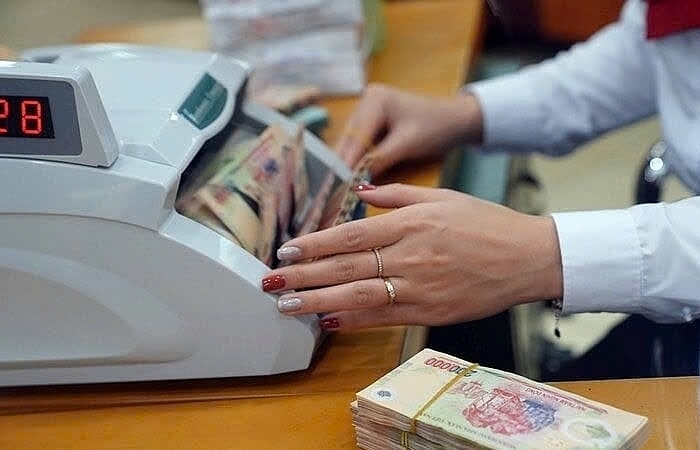Enhancing the application of risk management in tax administration and preventing tax loss
| Applying risk management mechanism, applying information technology to tax inspection | |
| Get opinion on draft circular supplementing and amending regulations on risk management |
 |
| Applying risk management guarantees uniformity in VAT refund operations and enhances transparency and openness. Photo: ST |
Classifying VAT refund files into 3 groups
Recent developments show that some taxpayers, exploiting the leniency of mechanisms and policies, have established companies mainly for illegal activities such as buying and selling fake invoices. Through tax management, tax authorities have identified typical illegal behaviors of some companies, organizations, and individuals, such as using electronic invoices illegally to embezzle state budget refunds, including fictitious exports, invoice trading, and usage of counterfeit invoices for profit. These activities include issuing invoices that defy regulations to legitimize costs, reduce tax, incorrect declarations, and failing to issue invoices for exported goods. Some businesses have used illegal invoices for VAT deductions and refunds, declaring fictitious expenses to evade corporate income tax (CIT), causing revenue losses to the state budget.
To counter increasingly sophisticated VAT refund fraud, the General Department of Taxation issued Decision 1388/QD-TCT on 18/9/2023 regarding the application of RM in classifying VAT refund files and selecting taxpayers for subsequent inspection and audit planning. From 25/10/2023, the Tax Department started implementing RM in VAT refund operations nationwide. The classification of VAT refund files and selection of taxpayers for inspection and audit planning is based on a set of criteria indices including 3 groups: indices for pre-refund, and post-inspection files; risk scoring method indices; and indices based on tax authority management requirements.
According to the General Department of Taxation, applying RM in tax management aligns with the inevitable trend of reform and modernization in the Tax sector. RM application ensures uniform VAT refund processes, reducing direct intervention by tax officials in taxpayer decisions, enhancing transparency and openness, and encouraging voluntary compliance with tax regulations. It also contributes to detecting and preventing tax law violations.
Following Decision 1388/QD-TCT, the General Department of Taxation organized training conferences for local tax departments on implementing RM in VAT refund file classification. Deputy General Director Dang Ngoc Minh emphasized the need for the General Department of Taxation to lead the application system deployment, assisting local tax departments in addressing emerging implementation issues. In addition, local tax departments are tasked with controlling, monitoring, and evaluating risk case reviews and inspections as per regulations.
Selecting taxpayers with risk indicators
At the Vinh Phuc Provincial Tax Department, right after Decision 1388/QD-TCT was released, the Tax Department initiated extensive dissemination and deep integration of the information among all staff and subordinate tax departments to thoroughly understand and implement RM in VAT refund activities. Furthermore, a dedicated team was formed to apply RM to classify VAT refund files. This team's responsibilities include reviewing and evaluating analytical results from the system, adhering to guidelines for applying RM in classifying VAT refund files and selecting taxpayers for post-refund inspection and audit planning. The team also controls, monitors, and evaluates the review and assessment of risk cases identified through system analysis, complying with regulations, and coordinates with the General Department's implementation team to resolve any issues that arise during the deployment.
RM in VAT refund operations applies to investment project refund files and refunds for exported goods and services. The risk assessment and ranking of taxpayers who request VAT refunds form the basis for pre-refund, and post-inspection decisions for high-risk taxpayer files. This assessment is also used for developing post-refund inspection and audit plans for VAT refund files subject to pre-refund, and post-inspection based on the taxpayer's risk rating.
Additionally, the classification of VAT refund files is crucial in standardizing content and procedural steps. It establishes uniformity in the selection of taxpayers with risk indicators for the classification of VAT refund files and the development of post-refund inspection and audit plans. This classification process is instrumental in advancing reforms, modernizing the approach to selecting taxpayers with risk indicators, promptly identifying tax law violations, and improving the overall effectiveness of tax administration.
Based on the output from various localities, the General Department of Taxation is developing a methodology for applying RM in selecting VAT, CIT, and particular consumption tax declaration files for inspections at Tax Department offices. This includes developing a comprehensive set of criteria indices for applying RM to taxpayer organizations and companies, as well as a set of criteria indices for using RM in selecting taxpayers who are households and individuals for inspections related to real estate transfer activities. Currently, the General Department of Taxation and associated units are in the final stages of reviewing and finalizing these RM criteria sets for practical implementation. The aim is to enhance tax management's effectiveness and efficiency while maximizing the ease for companies and individuals in complying with tax policies and laws.
Related News

Quang Nam Customs focuses on preventing smuggling and combating budget loss
11:07 | 26/12/2024 Customs

Vietnam, Korea Customs sign AEO MRA
11:07 | 26/12/2024 Customs
Latest News

Forecast upbeat for banking industry in 2025
14:30 | 27/12/2024 Finance

Ensuring financial capacity of bonds issuers
11:09 | 26/12/2024 Finance

Finance ministry announces five credit rating enterprises
14:54 | 25/12/2024 Finance

The capital market will see positive change
09:44 | 25/12/2024 Finance
More News

Corporate bond issuance value rises by 60 per cent
13:51 | 24/12/2024 Finance

Slower mobilization than credit may put pressure on interest rates
09:02 | 24/12/2024 Finance

Fed’s foreseen rate cuts affect foreign exchange rate
14:12 | 23/12/2024 Finance

Untying the knot for green finance
11:08 | 23/12/2024 Finance

Ensuring efficiency and transparency in use and management of houses and land at State enterprises
13:54 | 22/12/2024 Finance

Vietnam's stock market to develop strongly and sustainably
19:08 | 21/12/2024 Finance

Tax sector achieves revenue target of about VND1.7 million billion
18:32 | 21/12/2024 Finance

General inventory of public assets raises efficiency of use and management of country's resources
09:29 | 20/12/2024 Finance

Publicizes progress of public investment disbursement for important national projects
15:21 | 19/12/2024 Finance
Your care

Forecast upbeat for banking industry in 2025
14:30 | 27/12/2024 Finance

Ensuring financial capacity of bonds issuers
11:09 | 26/12/2024 Finance

Finance ministry announces five credit rating enterprises
14:54 | 25/12/2024 Finance

The capital market will see positive change
09:44 | 25/12/2024 Finance

Corporate bond issuance value rises by 60 per cent
13:51 | 24/12/2024 Finance




